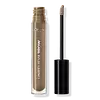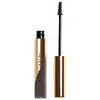What's inside
What's inside
 Key Ingredients
Key Ingredients

 Benefits
Benefits

No benefits
 Concerns
Concerns

 Ingredients Side-by-side
Ingredients Side-by-side

Isododecane
EmollientTrimethylsiloxysilicate
EmollientDisteardimonium Hectorite
StabilisingButylene/Ethylene/Styrene Copolymer
Ethylene/Propylene/Styrene Copolymer
Propylene Carbonate
SolventDimethicone
EmollientCyclopentasiloxane
EmollientSqualane
EmollientTalc
AbrasiveCopernicia Cerifera Cera
EmollientHelianthus Annuus Seed Cera
EmollientPhenoxyethanol
PreservativeTriethoxycaprylylsilane
Silica
AbrasiveCaprylic/Capric Triglyceride
MaskingTocopheryl Acetate
AntioxidantTetrahexyldecyl Ascorbate
AntioxidantO-Cymen-5-Ol
AntimicrobialBHT
AntioxidantPentaerythrityl Tetra-Di-T-Butyl Hydroxyhydrocinnamate
AntioxidantIsododecane, Trimethylsiloxysilicate, Disteardimonium Hectorite, Butylene/Ethylene/Styrene Copolymer, Ethylene/Propylene/Styrene Copolymer, Propylene Carbonate, Dimethicone, Cyclopentasiloxane, Squalane, Talc, Copernicia Cerifera Cera, Helianthus Annuus Seed Cera, Phenoxyethanol, Triethoxycaprylylsilane, Silica, Caprylic/Capric Triglyceride, Tocopheryl Acetate, Tetrahexyldecyl Ascorbate, O-Cymen-5-Ol, BHT, Pentaerythrityl Tetra-Di-T-Butyl Hydroxyhydrocinnamate
Isododecane
EmollientTalc
AbrasiveTrimethylsiloxysilicate
EmollientDimethicone
EmollientBeeswax
Emulsion StabilisingVp/Eicosene Copolymer
Caprylyl Methicone
Skin ConditioningTrihydroxystearin
Skin ConditioningTriethylhexanoin
MaskingTrisiloxane
Skin ConditioningDisteardimonium Hectorite
StabilisingSilica
AbrasiveHdi/Trimethylol Hexyllactone Crosspolymer
Propylene Carbonate
SolventPentaerythrityl Tetra-Di-T-Butyl Hydroxyhydrocinnamate
AntioxidantUltramarines
CI 75470
Cosmetic ColorantIron Oxides
CI 77891
Cosmetic ColorantIsododecane, Talc, Trimethylsiloxysilicate, Dimethicone, Beeswax, Vp/Eicosene Copolymer, Caprylyl Methicone, Trihydroxystearin, Triethylhexanoin, Trisiloxane, Disteardimonium Hectorite, Silica, Hdi/Trimethylol Hexyllactone Crosspolymer, Propylene Carbonate, Pentaerythrityl Tetra-Di-T-Butyl Hydroxyhydrocinnamate, Ultramarines, CI 75470, Iron Oxides, CI 77891
 Reviews
Reviews

Ingredients Explained
These ingredients are found in both products.
Ingredients higher up in an ingredient list are typically present in a larger amount.
Dimethicone is a type of synthetic silicone created from natural materials such as quartz.
What it does:
Dimethicone comes in different viscosities:
Depending on the viscosity, dimethicone has different properties.
Ingredients lists don't always show which type is used, so we recommend reaching out to the brand if you have questions about the viscosity.
This ingredient is unlikely to cause irritation because it does not get absorbed into skin. However, people with silicone allergies should be careful about using this ingredient.
Note: Dimethicone may contribute to pilling. This is because it is not oil or water soluble, so pilling may occur when layered with products. When mixed with heavy oils in a formula, the outcome is also quite greasy.
Learn more about DimethiconeDisteardimonium Hectorite comes from the clay mineral named hectorite. It is used to add thickness to a product.
It can also help stabilize a product by helping to disperse other ingredients.
Hectorite is a rare, white clay mineral.
Learn more about Disteardimonium HectoriteIsododecane is a fragrance, emollient, and solvent.
As an emollient, it helps your skin stay soft and hydrated. Emollients help trap moisture into your skin.
Isododecane's role as a solvent makes it a great texture enhancer. It spreads smoothly on skin and does not leave a sticky feeling behind. Isododecane also helps prevent color transfer in makeup products.
Isododecane is not absorbed into skin.
Learn more about IsododecanePentaerythrityl Tetra-Di-T-Butyl Hydroxyhydrocinnamate (long name, huh?) is a synthetic antioxidant.
It is used to help stabilize other antioxidants or prevent the color from changing in a product.
As an antioxidant, it helps fight free-radical molecules. Free-radical molecules are capable of damaging our cells and other genetic material. Thus, antioxidants may reduce the signs of aging.
This ingredient is oil-soluble.
Learn more about Pentaerythrityl Tetra-Di-T-Butyl HydroxyhydrocinnamateThis ingredient is a solvent. It helps dissolve active ingredients and alter the texture of products.
Propylene Carbonate is commonly used in makeup and with clay, such as montmorillonite or bentonite.
Studies show this ingredient to be safe for cosmetics. When it is undiluted, it can cause skin irritation. (It is always diluted in skincare and makeup). This ingredient is water-soluble.
Propylene Carbonate is created from propylene glycol and carbonic acid.
Learn more about Propylene CarbonateSilica, also known as silicon dioxide, is a naturally occurring mineral. It is used as a fine, spherical, and porous powder in cosmetics.
Though it has exfoliant properties, the function of silica varies depending on the product.
The unique structure of silica enhances the spreadability and adds smoothness, making it a great texture enhancer.
It is also used as an active carrier, emulsifier, and mattifier due to its ability to absorb excess oil.
In some products, tiny microneedles called spicules are made from silica or hydrolyzed sponge. When you rub them in, they lightly polish away dead skin layers and enhance the penetration of active ingredients.
Learn more about SilicaTalc is a clay mineral. It helps absorb moisture and improve the texture of products. Like other types of clay, Talc can have a slight exfoliating effect on skin. Talc can be added to increase the volume of products.
Some Baby powders are made by combining talc with corn starch. The word "talc" comes from Latin and originates from Arabic. Talc is a mineral commonly found throughout the world.
If you have any concerns about using talc, we recommend checking out the FDA's official page.
Learn more about TalcThis silicone is an emollient. Emollients create a thin film on the skin to prevent moisture from escaping.
It is not soluble in water and helps increase water-resistance in products.
According to a manufacturer, it can blend seamlessly with silicone oils, such as Cyclopentasiloxane.
Learn more about Trimethylsiloxysilicate